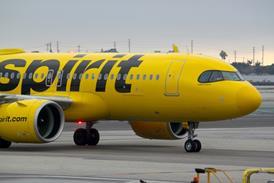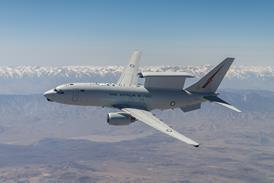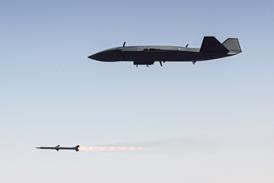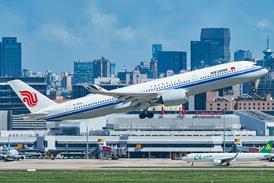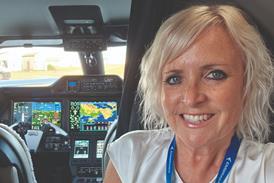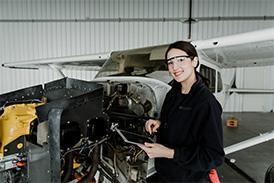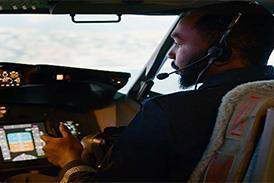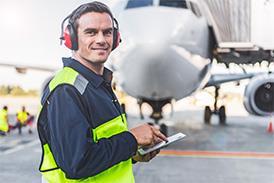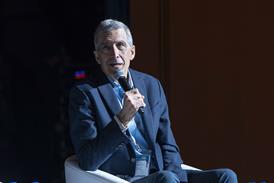Seven years from now, one of the biggest house-moves in history will begin when Emirates shifts its operations from what is today the world’s busiest international hub to Al Maktoum International, an airport built on an expanse of desert no longer known by the early name that gave it its DWC designation, Dubai World Central.
The Dubai authorities are on a countdown to transform what is – 12 years after passenger services began – still a small, secondary gateway into a five-runway megahub that will dwarf its predecessor and stand out in a region that has no shortage of shiny, giant, new airport terminals, including in Abu Dhabi and Doha.
Joining Emirates on the journey from Dubai International (DXB) to DWC will be dozens of other airlines, leaving the original airport – which has become increasingly capacity- and slot-constrained as one of the planet’s fastest growing cities has expanded around its fixed perimeter – to the real estate developers.
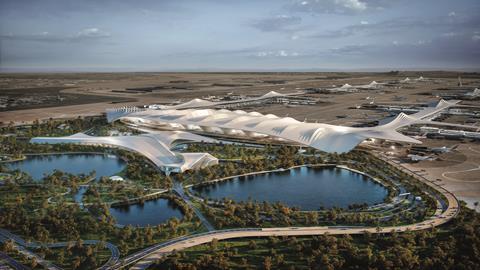
The Dubai government announced the AED128 billion ($35 billion) phase two expansion of DWC in April 2024. It involves building a four-concourse terminal with 400 gates and five parallel runways, taking capacity from around 100 million at DWC to 260 million passengers annually.
When the DWC vision was unveiled in the mid-noughties, the plan was to have the new airport up and running by the 2020s. However, the global financial and property crisis of 2008, which hit Dubai’s coffers hard, forced a rethink.
Instead, the project proceeded slowly, with phase one seeing the completion of the runway and launch of cargo operations in 2010, with commercial services following three years later. Meanwhile, a rapidly expanding Emirates consolidated its operations at the new DXB Terminal 3, which opened in 2008.
While airline growth at DWC has been modest – passenger numbers will be about 1.5 million this year – there has been a move to encourage private aviation away from congested DXB, with most operators now using the new airport. That has been accompanied by a rash of maintenance hangars and private terminals.
A cluster of cargo warehouses and light manufacturing, training, and servicing units, interspersed with hotels, offices, and apartments, has also sprung up as part of a wider initiative to create an aviation, commercial, and residential district the size of a large town, dubbed Dubai South.
One of the flagship infrastructure developments is Emirates’ engineering facility, a $950 million investment which the airline says is designed to support its operating needs into the 2040s, with spare capacity potentially offered to other carriers. Construction began last year, with the first phase due to complete in 2027.
Emirates is also responsible for another significant investment at DWC. For the past eight years it has been operating its residential ab-initio pilot academy there, complete with its own fleet of training aircraft and dedicated runway.
Dubai Airports chief executive Paul Griffiths says the prospect of moving the entire operation of Emirates and its sister airline Flydubai to DWC will be challenging. Together the two carriers account for about two-thirds of DXB’s passenger traffic. However, the move is necessitated by the older airport’s relentless growth.
CRITICAL MASS
Passenger numbers at DXB are expected to reach 99 million next year, and about 115 million by 2031. “As demand grows, it gets critical,” says Griffiths, who notes that when he arrived at Dubai Airports 15 years ago, just 32 million passengers passed through DXB each year. “We have to be ready to open by 2032.”
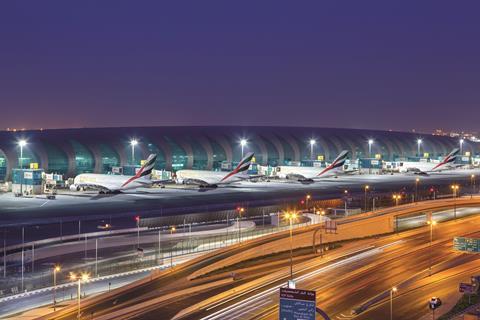
In the first year of operation, the upgraded DWC is expected to handle 124 million passengers, with that figure continuing to rise through the decade with the growth of Dubai as a commercial and leisure destination and Emirates’ success in connecting more of the world through the Gulf city.
As always with a new airport, a clean-sheet development will give Griffiths and his team a chance to rethink everything, from the micro – individual passenger experiences – to the macro, with the layout of what will be one of the world’s largest airports by area.
“We are currently reviewing the terminal design. You can imagine with a field of that size, we must make sure all the details are right,” he says. “Also, when it comes to technology, things are moving so quickly that you have to imagine what the technology will be like in 10 years and work back from that.”
Griffiths believes that after years of “incremental development”, advances in technology – from smart gates to eye recognition software – will spur huge changes in how airports are designed and operate. “We’re long overdue a massive overhaul of process and technology in the airport space,” he says.
Until the new airport opens, Griffiths says that his staff “continue to do miracles” at DXB, which has seen a 22% growth in traffic in a decade and, with highways and buildings embracing the airport on all four sides, has almost no room to expand or add infrastructure.
While current plans to relocate a fire station will add 10 aircraft stands, the last major construction project at DXB was Concourse D – connected to Terminal 1 by monorail – in 2016. Prior to Terminal 3’s opening, Terminal 2, on the far side of the airfield, and where Flydubai is based, was established in 1998.
Compared with the ultra-modern hubs in Doha and Abu Dhabi, DXB – particularly Terminal 1, which dates from the 1970s – is beginning to look tired and at times overcrowded, including the check-in areas.
Griffiths says his team is looking at innovative ways of using artificial intelligence and imaging technology to shape the new DWC terminal and make the passenger journey landside and airside more streamlined.
“It’s something we are very focused on,” he says. “If we can double the flow in the same space, you have double the capacity. If we can get people into the retail areas close to the gates quicker, it means they are more relaxed and have more time and will be more inclined to buy that high-end watch.”
He adds: “We are trying to create a frictionless airport, where you don’t need to stop, where one biometric signature sees you through the whole process. That way we can eliminate check-in altogether and have a security that, while more secure, is less intrusive.
“You simply show up and walk through discreet but effective security. Cameras are embedded in walls and gathering data. If we can do that and make the whole process seamless, you don’t need a massive area,” he says.
“A lot of airports are designed for queues. The other enemy of big airports is walking distance. If I am building an airport for 260 million passengers, do I need to squeeze them all through one gateway, or, rather than corralling people, do we create eight separate concourses, each with a capacity of 30 million?
“What we are trying to do is intimacy at a scale. Big is not necessarily bigger. We want an airport where you transfer from one intimate concourse to another. AI means we can schedule aircraft on a flexible basis, and schedule connections so that connecting passengers are closest to the aircraft they are connecting to.”
There are still plenty of challenges when it comes to expanding DWC that are beyond Dubai Airports’ control. For instance, the airport currently has no public transport links, with the southbound line of the Dubai metro stopping at the Expo site some 5km away.
However, the planned Etihad Rail network for the UAE is expected to include a stop at DWC. Griffiths envisages an eventual integrated system where passengers en route to the airport will be able to check their bags in at train stations.
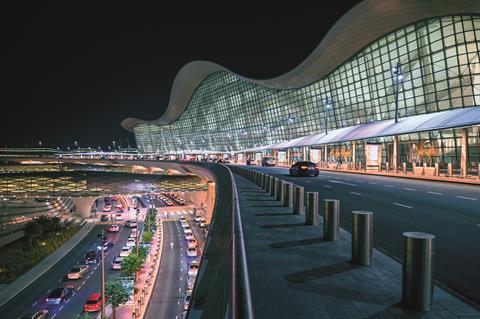
Just a 50min drive from DWC, the striking Terminal A at Abu Dhabi International Airport is marking its second anniversary. Conceived early last decade to accommodate what was then the ambitious network strategy of Etihad, the project was six years late when it opened in November 2023. However, passengers appear to believe the wait was worth it. With around 31 million people using the terminal last year, the building is still comfortably below its 45 million capacity.
SIGNIFICANT HUB
The UAE’s third airport for scheduled services is Sharjah, main base of low-cost carrier Air Arabia (which also operates from Abu Dhabi and the emirate of Ras Al Khaimah). It handled 17.1 million passengers in 2024, and traffic numbers are up this year. It is also a significant air freight hub.
With other airports in the northern-most emirate of Fujairah and the desert oasis city of Al Ain, plus a dedicated business aviation facility at Al Bateen in the city of Abu Dhabi, the UAE, with its population of around 11 million, has plenty of ways to enter and leave the country by air.
However, the new DWC will eclipse not only those airports but most likely every other one in the world by the time it reaches its capacity of 260 million passengers sometime before the century’s half-way mark.


